Eclipse Images Throughout History Capture Shock and Awe
For more than a century, photographs have documented our enthusiasm, wonder, and ‘eclipse madness.’
On April 8, the moon’s shadow will cut a swath across North America, from Mazatlán in Mexico and then across the United States, Texas to Maine, all the way to Newfoundland in Canada. In towns and cities in the path of totality—where the moon completely blocks the sun—hotels are in high demand. Airlines are promoting flights that coincide with the eclipse, including special eclipse-viewing charter flights. Millions of Americans near the path of totality are expected to hit the road to witness the first eclipse to cross the continent coast-to-coast since Aug. 21, 2017. Still others will attend special events to be around fellow eclipse enthusiasts, including Atlas Obscura’s own Ecliptic Festival in Hot Springs, Arkansas. There is, in short, eclipse madness, and not for the first time.
More than a century ago, the East Oregonian described otherworldly scenes of the eclipse: “Along the streams the crows flew to their roosts in the weird darkness of midafternoon, and the sensations as the unnatural gloom deepened was one of the impending end of all things. All the traditional thrills and creepy feelings ascribed to eclipses proved a part of the real thing and the experience of a lifetime will never be forgotten by those who passed through it.”
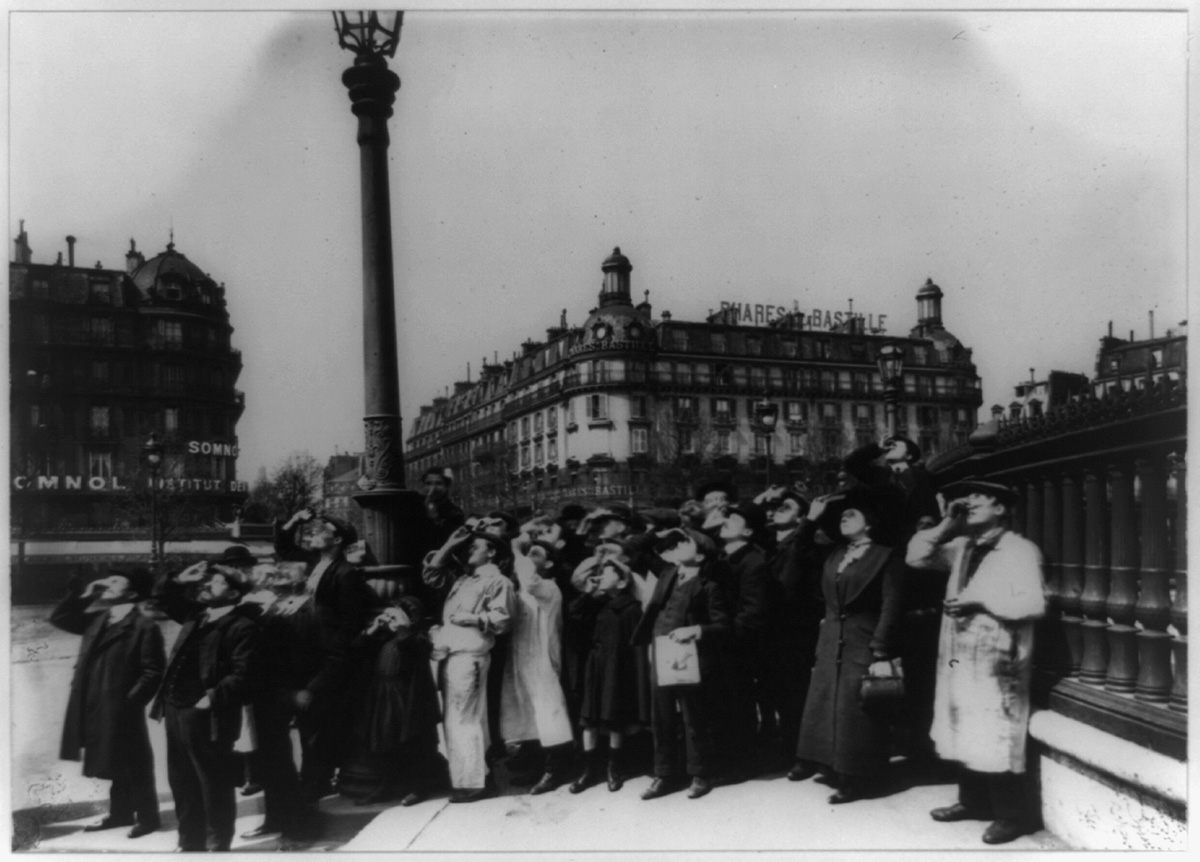
Witnessing the eclipse itself is not safe for the eyes (except during the brief period of totality), so NASA recommends using certified eclipse-viewing glasses only—even the darkest sunglasses won’t cut it. There was no certification for eclipse glasses in 1918, and one of the recommended ways to view the phenomenon then was through smoked glass. A “stamp a squint” promotion by the War Savings Stamps salespeople allowed passersby to pay to peek through smoked glass. Today, however, we know this to be an ineffective method of protecting the eyes. Other early suggestions for safe eclipse-viewing included watching the reflection in a bucket of water or oil in a place “where it may not be agitated by the wind” (notably more effective than smoked glass).

Regardless of the eyewear or historical period, eclipse-viewers have always shared—and will share again this year—the same sense of wonderment. To kick off Atlas Obscura’s coverage leading up to the April 8 total solar eclipse, we have compiled a selection of vintage photos of people caught in the throes of that wonder.
This piece was originally published in 2017 and has been updated as part of Atlas Obscura’s Countdown to the Eclipse, a collection of new stories and curated classics that celebrate the 2024 total solar eclipse and the Ecliptic Festival in Hot Springs, Arkansas.
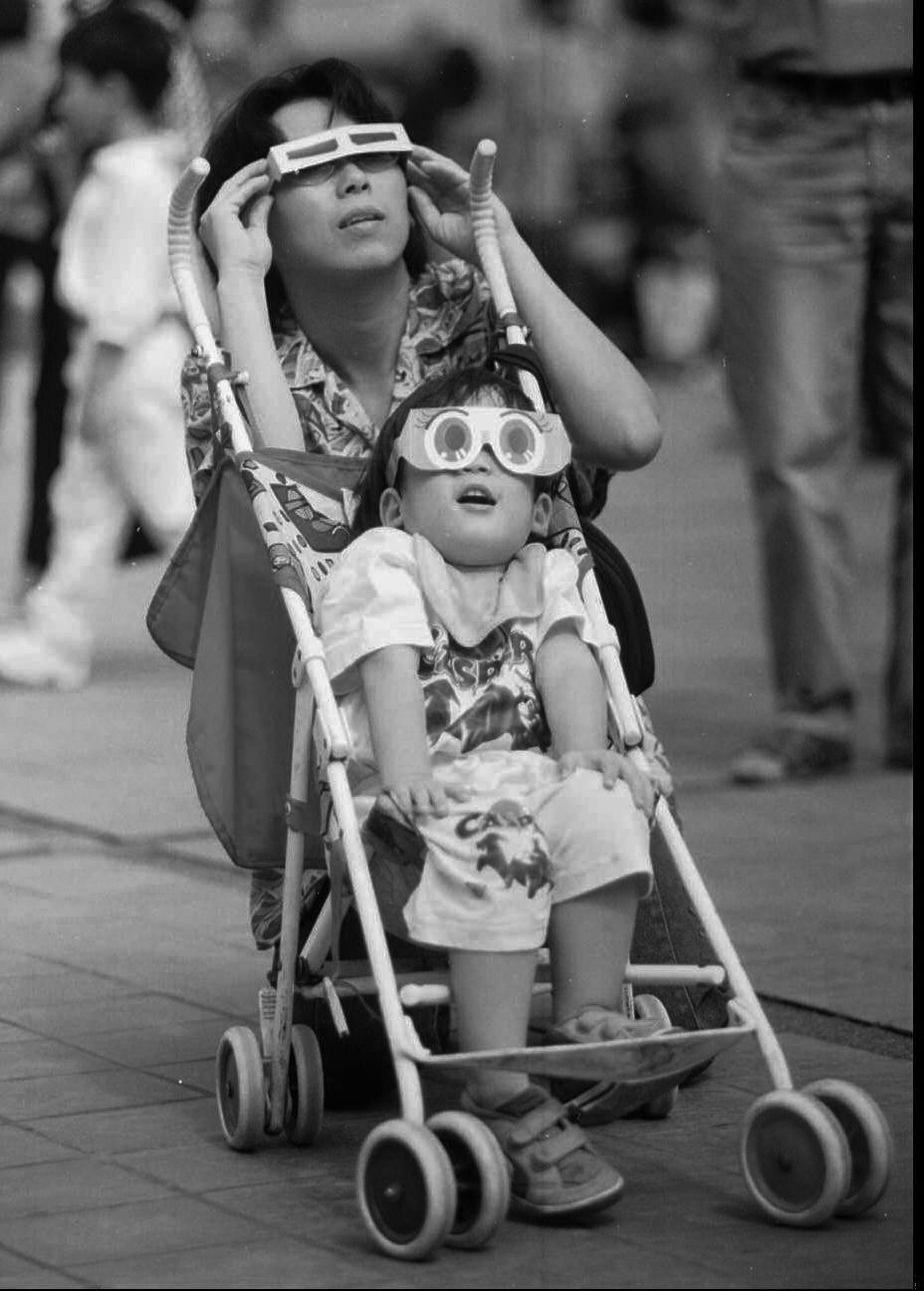

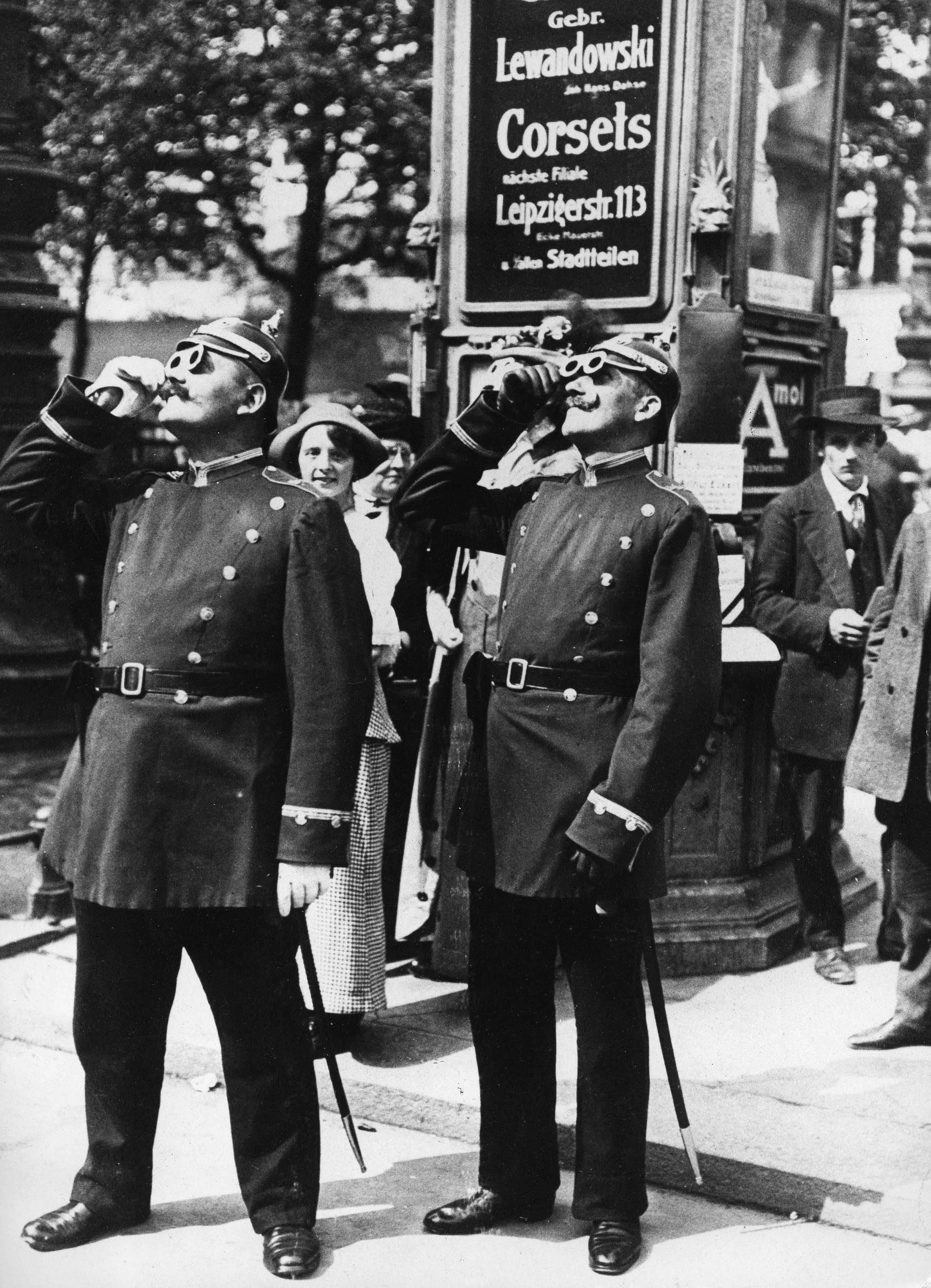
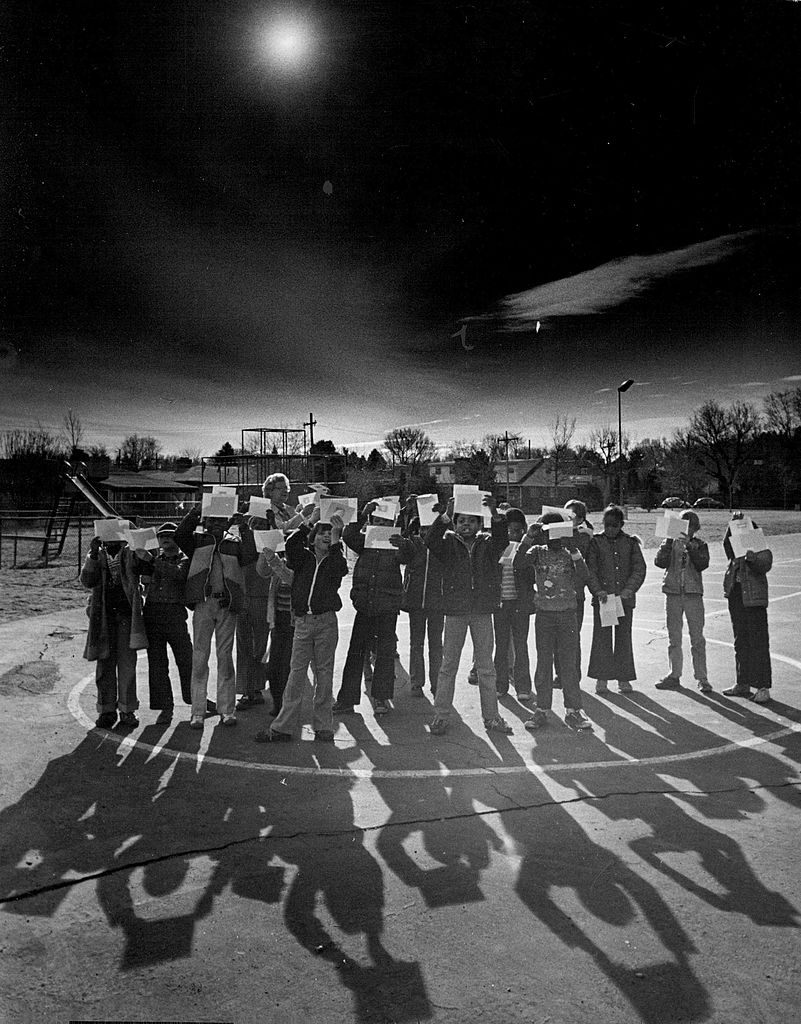
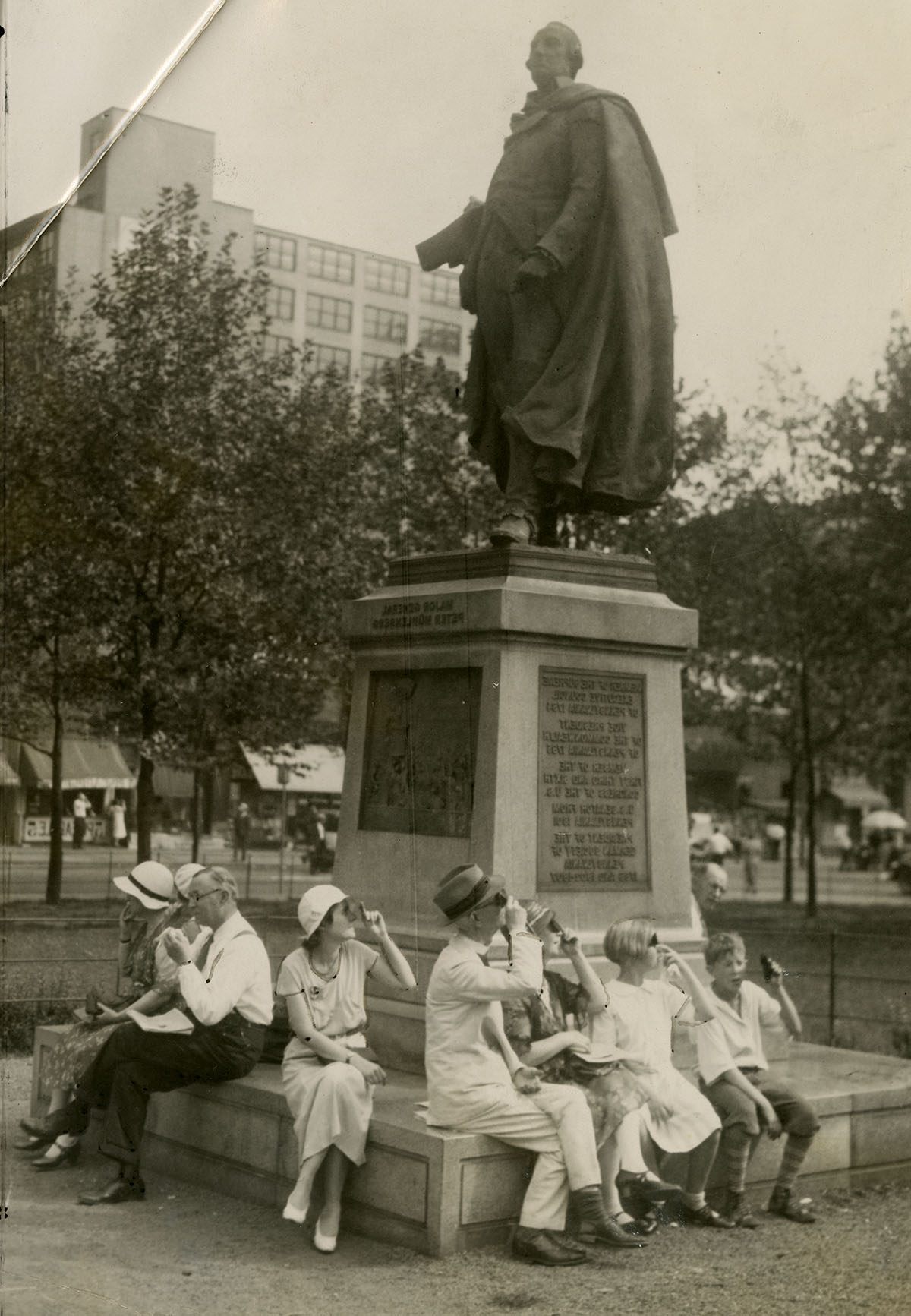

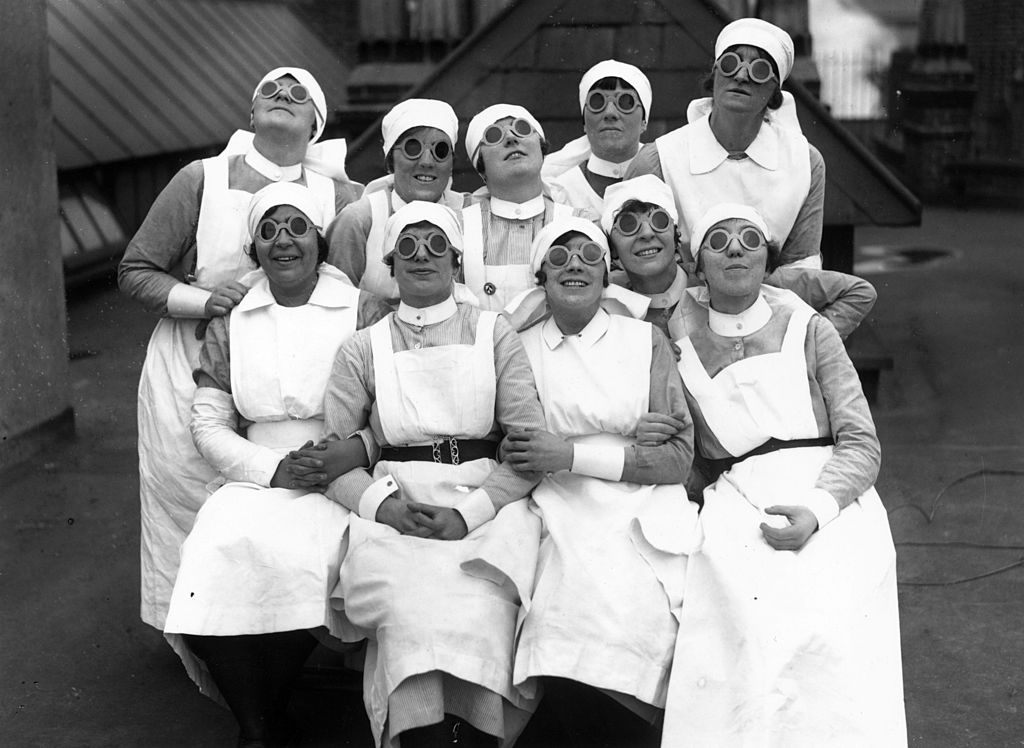
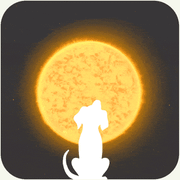


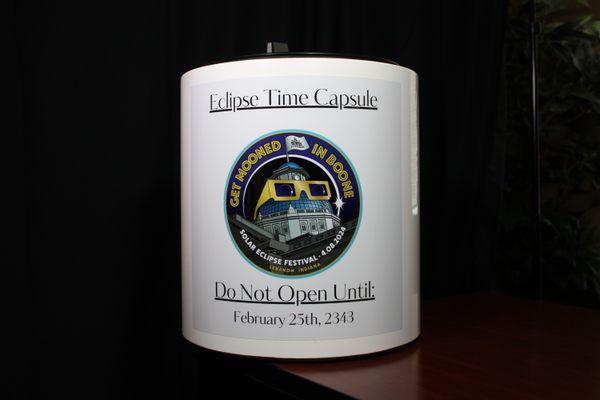

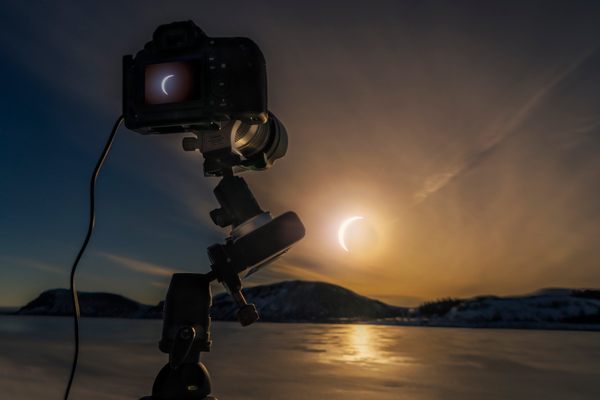

Follow us on Twitter to get the latest on the world's hidden wonders.
Like us on Facebook to get the latest on the world's hidden wonders.
Follow us on Twitter Like us on Facebook